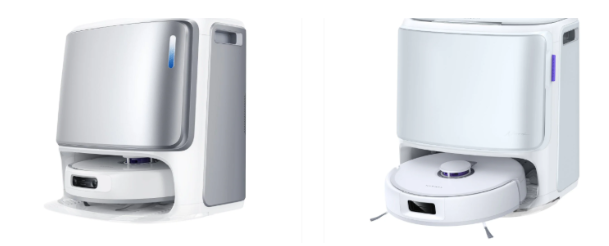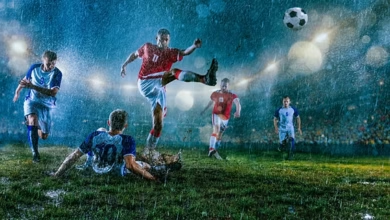The Impact of Cleaning Habits on Floor Safety and Slip Risks

Slips, trips, and falls are a leading cause of workplace injuries. These incidents can lead to serious harm, lost productivity, and increased costs. Understanding how cleaning habits impact floor safety and contribute to slip risks is essential for creating a safer environment.
Understanding the Risks
Common Causes of Slips and Falls
Several factors can contribute to slip and fall accidents. Identifying these hazards is the first step in prevention.
- Wet or Oily Floors: Spilled liquids, grease, or cleaning solutions can create slippery surfaces.
- Debris and Clutter: Loose materials, tools, or trash left on walkways pose tripping hazards.
- Uneven Flooring: Cracked tiles, worn carpets, or variations in floor height can cause missteps.
- Cords and Wires: Electrical cords or cables running across walkways can lead to trips and falls.
- Weather-Related Hazards: Ice, snow, or rain tracked indoors can create slippery conditions.
The Role of Cleaning in Slip Risks
Cleaning, while intended to improve safety, can inadvertently create slip hazards. Wet floors are a primary concern, as are improper cleaning methods.
- Wet Floors: Floors left damp after cleaning significantly increase slip risks.
- Incorrect Cleaning Products: Using the wrong cleaning agents can leave slippery residues.
- Improper Application: Applying too much or too little cleaning product can lead to unsafe floor surfaces.
Safe Cleaning Practices for Floor Safety
Implementing safe cleaning practices is crucial for minimizing slip risks and ensuring floor safety. A comprehensive approach includes proper procedures, training, and equipment.
Establish a Cleaning Regime
An effective cleaning regime requires a well-managed system to identify problem areas, decide on appropriate actions, implement those actions, and verify their effectiveness. Communication and collaboration are essential at all levels to ensure that the best cleaning products and practices are used for the specific floor type and contaminants present.
Proper Floor Cleaning Procedures
- Clean Spills Immediately: Use appropriate absorbent materials to clean spills and ensure the floor is left dry.
- Use Caution Signs: Always use ‘Caution: Wet Floor’ signs to warn individuals until the area is completely dry.
- Regular Cleaning: Mop and dry floors frequently, especially in high-traffic areas.
- Select the Right Products: Use appropriate cleaning agents for different flooring materials to prevent slick surfaces.
- Ensure Proper Drainage: Verify that drains and flooring are in good condition to prevent standing water.
Promote Good Housekeeping
Employees must follow housekeeping rules to maintain clear walkways and prevent slip hazards. Establish expectations for tidy workspaces and guarantee that all employees have the necessary resources and training to properly store items, dispose of rubbish, and clean messes.
Train and Educate Employees
Proper training and supervision are essential to guarantee that cleaning is carried out to the correct standard. Cleaners should be informed of their responsibilities and the reasons behind specific cleaning methods or schedules. Lack of understanding can lead to inappropriate shortcuts that increase slip risks. Regular training sessions can reinforce good practices, such as proper housekeeping and safe cleaning procedures.
Cleaning Methods
Cleaning methods play a significant role in floor safety. Improper techniques can introduce or exacerbate slip hazards. Schedule cleaning during off-hours or utilize quick-drying solutions when possible to minimize risks. Verify that ‘wet floor’ signs are consistently used and clearly visible. Additionally, assess cleaning products and techniques to ensure they are suitable for the flooring in your workplace. Proper floor cleaning can go a long way in preventing slip and fall accidents while also delivering the highest level of clean.
Maintenance and Inspections
Regular maintenance is essential for preventing slip and fall hazards. Inspect floors and walkways regularly for wear, damage, or hazards like loose tiles or uneven surfaces. Encourage employees to report these issues and address them as quickly as possible. Follow up promptly to resolve issues, which demonstrates a commitment to worker safety and encourages employee participation.
Appropriate Footwear
Slip-resistant footwear can significantly reduce the risk of slips and falls.
Safety Signage and Markings
Safety signage and walkway markings play a crucial role in preventing slips and falls.
- Clearly Mark Hazards: Use signs to indicate hazardous areas such as wet floors or uneven steps.
- Ensure Proper Lighting: Maintain adequate lighting in stairwells, hallways, and outdoor walkways.
- Use Non-Slip Coatings and Mats: Apply non-slip floor coatings or mats in high-risk areas like entryways and kitchens.
Safety Inspections and Training
Regular safety inspections and comprehensive training programs are critical for preventing slip and fall accidents.
- Train Employees: Employees should be trained to recognize and report hazards.
- Routine Inspections: Schedule routine workplace inspections to identify and address slip risks.
- Promote a Safety Culture: Encourage a safety-first mindset to ensure every employee takes responsibility for good housekeeping.
Floor Cleaning Equipment Choices
Utilizing less water in the process, executing protocols more efficiently, and selecting floor cleaning tools designed to minimize water and debris left on surfaces can greatly support your facility in reducing slip and fall accidents.
Statistics Supporting Good Housekeeping
Statistics underscore the importance of good housekeeping in preventing falls:
- Slips, trips, and falls account for a significant percentage of all workplace injuries.
- A substantial number of slip and fall accidents are caused by hazardous walking surfaces, including wet or cluttered floors.
- Businesses spend billions annually on slip, trip, and fall injuries, including compensation and medical costs.
- Workplaces that implement structured housekeeping programs frequently experience a considerable reduction in fall-related incidents.
These statistics highlight that slips, trips, and falls are preventable with proactive housekeeping and safety measures.
Practical Steps for Implementation
Transitioning from awareness to action involves practical steps that can be implemented immediately.
Evaluate Work Area
Evaluate the work area for slip hazards, looking for spills, clutter, loose mats, or uneven flooring. Ensure walkways and stairways are well-lit and clear of obstructions.
Follow Cleaning and Spill Response Procedures
Maintain readily available cleaning supplies and ensure all employees understand how to use them. Clean spills promptly and post warning signs whenever floors are wet.
Wear Appropriate Footwear
If working in a high-risk area, invest in slip-resistant shoes. Encourage employees to replace worn-out shoes to maintain adequate traction.
Foster a Culture of Safety
Report slip hazards immediately to supervisors or maintenance staff. Participate in safety meetings and training on good housekeeping.
Regularly Inspect Walkways
Conduct weekly safety audits to identify and address hazards. Implement a housekeeping schedule that ensures floors remain clean and dry.
By making good housekeeping a daily habit, workplaces can significantly reduce injuries, improve efficiency, and create a safer environment for all employees.
Floor Safety Training
Investing in floor safety training is essential for creating a safer workplace. Training programs educate employees on how to identify and address hazards. This heightened awareness reduces the risk of accidents and helps ensure compliance with health and safety regulations.
Conclusion
Preventing slips, trips, and falls requires a comprehensive approach that includes identifying hazards, implementing safe cleaning practices, and promoting a culture of safety. By prioritizing floor safety, workplaces can significantly reduce the risk of accidents, improve productivity, and create a safer environment for all.
Slips, trips, and falls are preventable–and good housekeeping is the key to reducing these risks. A clean, well-maintained workplace keeps employees safe, improves productivity, and minimizes costly workplace accidents. By following proper cleaning procedures, keeping walkways clear, wearing the right footwear, and conducting regular inspections, we can create a safer, more efficient workplace for everyone.
In today’s world of modern cleaning, consider exploring the advanced options of a vacuum robot to enhance your floor safety strategy.



